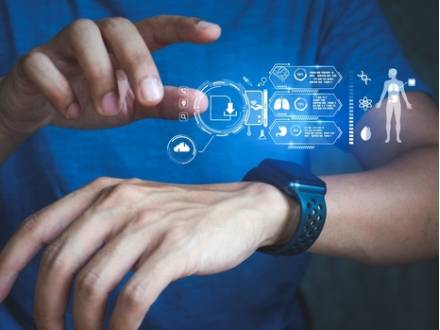Wearable Technology and Workers’ Compensation in California
 As technology develops to meet more needs, some innovations can play a significant role in keeping employees safer than they used to be. One area where this is becoming increasingly noticeable is with wearable technology. Devices such as fitness trackers and smart helmets can monitor a worker's health and safety in real time, and there has been a noticeable effect on workers’ compensation claims. If you suffered a work injury and want to explore how wearable technology can impact your claims, speak with a skilled Hollister, CA workers' compensation lawyer to learn more.
As technology develops to meet more needs, some innovations can play a significant role in keeping employees safer than they used to be. One area where this is becoming increasingly noticeable is with wearable technology. Devices such as fitness trackers and smart helmets can monitor a worker's health and safety in real time, and there has been a noticeable effect on workers’ compensation claims. If you suffered a work injury and want to explore how wearable technology can impact your claims, speak with a skilled Hollister, CA workers' compensation lawyer to learn more.
Benefits of Wearable Technology in the Workplace
Workplace injuries, and resulting workers’ compensation claims, continue to add up year after year. Many employers find themselves seeking ways to prevent this, whether out of concern for their workers’ safety or their financial bottom line. Regardless, one method that many employers have been considering is introducing wearable technology. This offers several benefits, including:
-
Health tracking: Information about an employee’s heart rate, stress levels, and fatigue can provide insights into his or her well-being and help employers understand when their workers may be at risk of injury due to overexertion or stress.
-
Improved safety monitoring: Wearable technology can track employee movements and detect hazardous conditions. For example, smart helmets can alert construction workers to potential dangers, thereby helping prevent accidents before they happen.
-
Data collection: Some wearable devices collect important information about employee health and work conditions. This data can help analyze trends, prevent future injuries, and improve workplace safety programs.
Disadvantages of Wearable Technology for a Workers’ Compensation Claim
While wearable technology can offer many benefits in the workplace, there are also several drawbacks, such as:
-
Flawed data: Like other technologies, wearables are not always perfect and can sometimes provide inaccurate data, which can cast doubt on the validity of an injury claim. Even if data is accurate, it can ignore important context. For example, a wearable device can indicate an employee’s high stress levels but not account for situational factors that contribute to an injury.
-
Privacy concerns: Employers need to inform workers if the devices are collecting data. Private data being used against a worker without proper consent or understanding can actually lead to legal complications.
-
Contradictory evidence: Physical activity tracking devices might indicate that a worker was engaged in strenuous activities before an injury. This data could be used in an argument that the injury was not work-related or that the worker was negligent. Additionally, high heart rates or fatigue levels recorded before an injury might be misinterpreted as proof that the employee suffered from pre-existing conditions rather than a work-related incident.
-
Employer defense: If an employer can show that safety measures (like wearables) were provided but that employees failed to utilize them properly, this can shift some liability away from the employer. Additionally, if an injury can be attributed to a worker’s failure to follow guidelines indicated by wearable data, it could weaken a workers’ compensation claim.
Since wearable technology is a relatively recent development, there is still confusion about how it can affect a case. For example, if data from a wearable device shows overexertion, including high stress levels or fatigue, this can either help or hurt your case depending on the other factors involved.
Schedule a Free Consultation with a San Benito County, CA Workers’ Compensation Lawyer
If you were injured at work while wearing work-mandated wearable technology, speak with a knowledgeable Hollister, CA workers’ compensation attorney to understand your rights. At Cramer + Martinez, we are passionate about addressing new issues to help our clients get favorable outcomes and get back on their feet. Call us at 408-848-1113 to schedule a free consultation.








